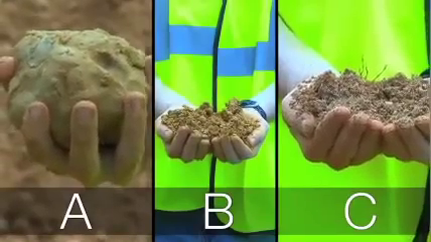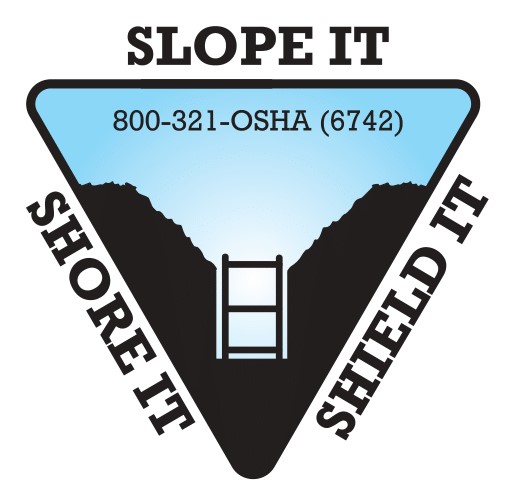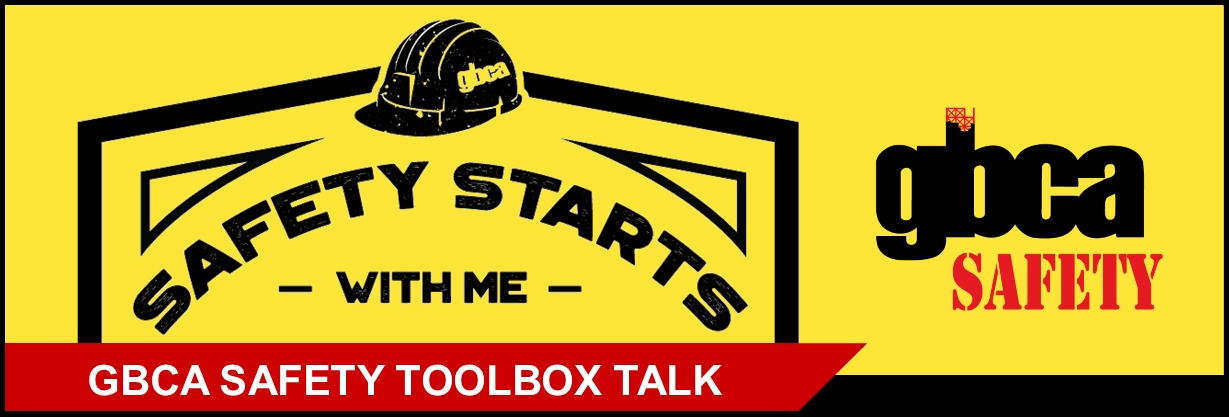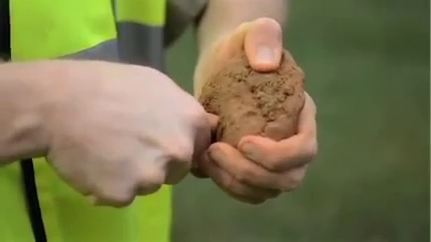This GBCA Safety Toolbox Talk discusses soil types and now they impact excavation and trenching activities. Click below to download the Toolbox Talk as a multi-page handout.
Trenching and Excavation: Soil Types
Introduction
Excavation and trenching are among the most hazardous construction operations. The Occupational Safety and Health Administration’s (OSHA) Excavation standards, 29 Code of Federal Regulations (CFR) Part 1926, Subpart P, contain requirements for excavation and trenching operations.
What do the OSHA Excavation standards cover, and how do they protect workers?
The standards apply to all open excavations made in the Earth’s surface, including trenches. Following the requirements of the standards will prevent or greatly reduce the risk of cave-ins and other excavation-related incidents.
What are the soil classification categories?
Some of the compliance methods permitted under the Excavation standards require a competent person to classify soil and rock deposits as,
- Stable rock;
- Type A soil;
- Type B soil; or
- Type C soil.
See Appendix A to Subpart P of Part 1926 – Soil Classification.

Stable Rock
Natural solid mineral matter that can be excavated with vertical sides and remain intact while exposed.
Type A
Cohesive soils with an unconfined compressive strength of 1.5 tons per square foot (tsf) (144 kPa) or greater. Examples include: clay, silty clay, sandy clay, and clay loam. Certain conditions preclude soil from being classified as Type A. For example, no soil is Type A if it is fissured or has been previously disturbed. See Appendix A to Subpart P of Part 1926, paragraph (b) – Definitions (Type A), for a detailed definition of Type A soil.
Type B
Includes cohesive soil with an unconfined compressive strength greater than 0.5 tsf (48 kPa) but less than 1.5 tsf (144 kPa) and granular cohesionless soils (such as angular gravel, similar to crushed rock, silt, silt loam, sandy loam, and, in some cases, silty clay loam and sandy clay loam). See Appendix A to Subpart P of Part 1926, paragraph (b) — Definitions (Type B), for a detailed definition of Type B soil.
Type C
Cohesive soil with an unconfined compressive strength of 0.5 tsf (48 kPa) or less, granular soils (including gravel, sand, and loamy sand), submerged soil or soil from which water is freely seeping, submerged rock that is not stable, or material in a sloped, layered system where the layers dip into the excavation or with a slope of four horizontal to one vertical (4H:1V) or steeper. See Appendix A to Subpart P of Part 1926, paragraph (b) — Definitions (Type C), for a detailed definition of Type C soil.
Thumb Penetration
The thumb penetration test can be used to estimate the unconfined compressive strength of cohesive soils. (This test is based on the thumb penetration test described in American Society for Testing and Materials (ASTM) Standard designation D2488—‘‘Standard Recommended Practice for Description of Soils (Visual—Manual Procedure).’’)
Type A soils with an unconfined compressive strength of 1.5 tons per square foot (tsf) can be readily indented by the thumb; however, they can be penetrated by the thumb only with very great effort.
Type B soils with an unconfined compressive strength between 0.5 and 1.5 tsf will allow your thumb will sink into the soil up to the end of your thumbnail.
Type C soils with an unconfined compressive strength of 0.5 tsf can be easily penetrated several inches by the thumb, and can be molded by light finger pressure.
This test should be conducted on an undisturbed soil sample, such as a large clump of spoil, as soon as practicable after excavation to keep to a minimum the effects of exposure to drying influences.
If the excavation is later exposed to wetting influences (rain, flooding), the classification of the soil must be changed accordingly.
- Type A: Only with great effort, tip of the thumb.
- Type B: Penetrates to the end of thumbnail.
- Type C: Easily penetrated by several inches.
What is a competent person?
A competent person is an individual, designated by the employer, who is capable of identifying existing and predictable hazards in the surroundings or working conditions which are unsanitary, hazardous or dangerous to workers, and who is authorized to take prompt corrective measures to eliminate them.
Under the Excavation standards, tasks performed by the competent person include:
- Classifying soil;
- Inspecting protective systems;
- Designing structural ramps;
- Monitoring water removal equipment; and
- Conducting site inspections.
Preplanning
What safety factors should be considered?
Employers should know as much as possible about the jobsite and the materials they will need to have on hand to perform the work safely and in compliance with OSHA standards. A safety checklist may prove helpful when employers are considering new projects. Factors to consider may include:
- Traffic
- Proximity and physical condition of nearby structures
- Soil classification
- Surface and ground water
- Fall protection needs
- Location of the water table
- Overhead and underground utilities
- Weather
- Number of ladders that may be needed
- Quantity of shoring or protective systems that may be required
- Other equipment needs.
Employers can gather the information they need through jobsite studies, observations, test borings for soil type or conditions, and consultations with local officials and utility companies. This information will help employers determine the amount, kind, and cost of safety equipment they will need to perform the work safely.

Remember to record the attendees of your toolbox talk!
Access GBCA’s full library of toolbox talks:








